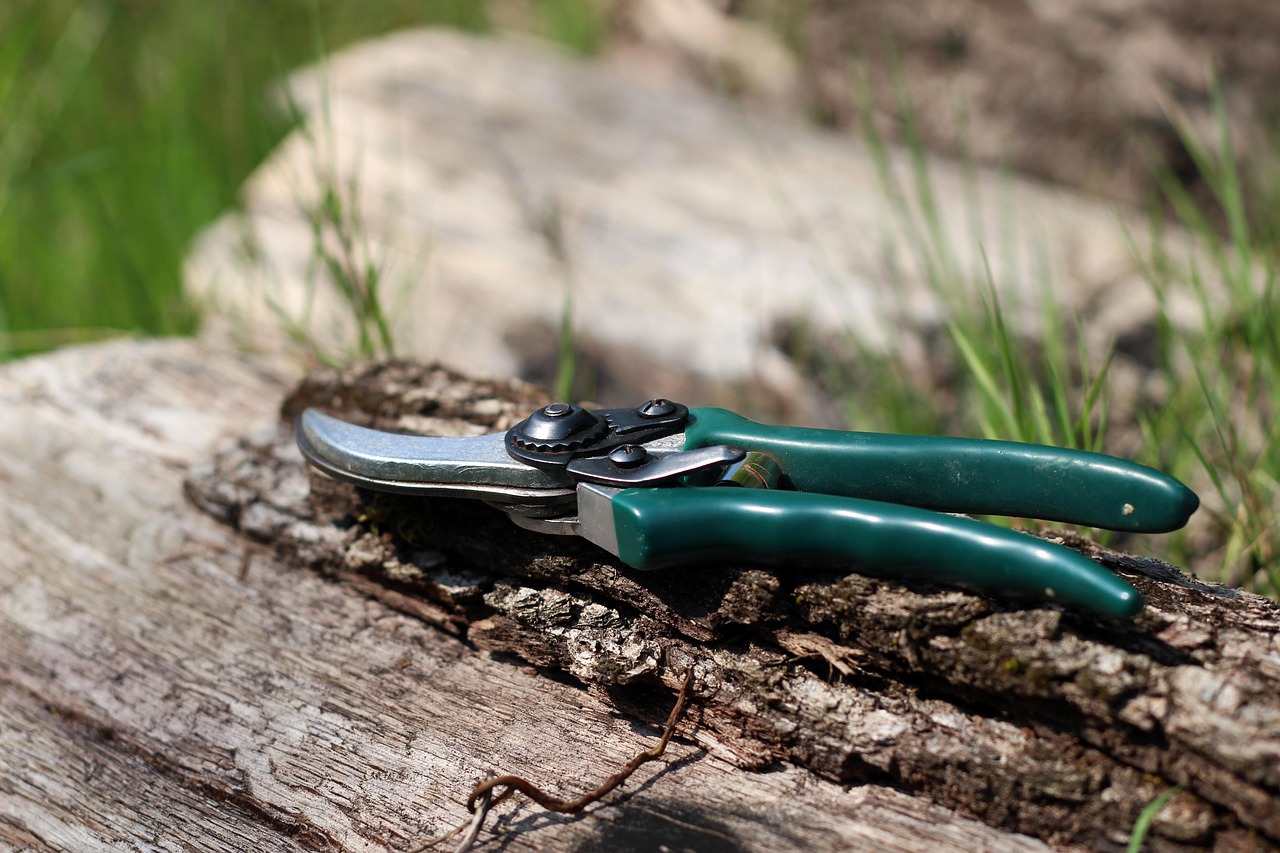Routine pruning in home and community gardens promotes healthy plant growth, enhances aesthetic appeal, and prevents disease. It also increases fruit and flower production while allowing for better air circulation and sunlight penetration, crucial for plant vitality.
Understanding Routine Pruning
Pruning is an essential practice in gardening. It involves the selective removal of specific parts of a plant, such as branches, buds, or roots. This method not only shapes the plant but also encourages new growth. Regular pruning helps maintain the health and productivity of various plants in both home and community gardens.

While it may seem daunting, understanding the benefits of routine pruning can motivate gardeners to incorporate it into their gardening practices. Many gardeners, especially beginners, often overlook this crucial task. However, the advantages are numerous and can significantly impact the overall health of the garden.
The Importance of Pruning
Pruning is not just about aesthetics; it plays a fundamental role in plant health. By removing dead or diseased branches, gardeners can prevent the spread of pests and diseases. This practice allows the remaining branches to thrive by directing nutrients where they are most needed. Additionally, pruning can help to rejuvenate older plants, encouraging them to produce new growth and blooms.
Here are some key benefits of routine pruning:

- Encourages Healthy Growth: Regular pruning stimulates new growth by allowing more light and air to reach the plant’s core.
- Improves Plant Structure: It helps maintain a strong framework that supports the plant as it grows.
- Enhances Flower and Fruit Production: Pruning promotes better flowering and fruiting by redirecting energy from unproductive branches to those that bear fruit.
- Prevents Disease: Removing diseased or damaged branches reduces the risk of infection spreading to healthy parts of the plant.
- Increases Aesthetic Appeal: A well-pruned garden looks tidy and organized, enhancing its visual appeal.
Types of Pruning Techniques
There are various techniques used in pruning, each serving different purposes. Understanding these methods can help gardeners choose the best approach for their plants.
| Pruning Technique | Description | Best For |
|---|---|---|
| Thinning | This involves removing entire branches to improve air circulation and light penetration. | Trees and shrubs |
| Heading | This technique trims back the tips of branches to encourage bushier growth. | Flowering shrubs |
| Deadheading | This involves removing spent flowers to promote new blooms. | Annuals and perennials |
| Rejuvenation Pruning | This technique involves cutting back old or overgrown plants to encourage new growth. | Older shrubs and trees |
Timing Matters
The timing of pruning is crucial for its effectiveness. Different plants require pruning at specific times of the year. For example, many flowering shrubs benefit from pruning just after they bloom, while trees are often pruned during dormancy in late winter or early spring.
The following list highlights general guidelines for when to prune various types of plants:

- Deciduous Trees: Late winter or early spring before new growth starts.
- Evergreen Trees: Late spring after new growth has emerged.
- Flowering Shrubs: Immediately after flowering to avoid cutting off next year’s blooms.
- Fruit Trees: Late winter while dormant for shaping and health.
Gardening enthusiasts should always research specific plants to determine the optimal pruning schedule. By adhering to these guidelines, gardeners can maximize the benefits of their efforts.
The Community Impact of Pruning
In community gardens, routine pruning not only benefits individual plants but also enhances the collective garden environment. Well-maintained communal spaces invite more visitors and foster a sense of pride among local gardeners. This practice encourages community involvement, as members can share knowledge and techniques related to proper pruning practices.
Moreover, engaging with neighbors in this way helps build relationships and strengthens community ties. As participants work together, they can create a vibrant atmosphere that reflects their shared dedication to gardening and environmental stewardship.

In summary, routine pruning is an invaluable practice for both home and community gardens. It fosters healthier plants, enhances beauty, and promotes a vibrant gardening culture among neighbors. Understanding its benefits and techniques can inspire gardeners to dedicate time to this essential task.
Common Misconceptions About Pruning
Despite the numerous benefits of routine pruning, several misconceptions can deter gardeners from adopting this vital practice. Clarifying these misunderstandings can empower both novice and experienced gardeners to embrace pruning in their gardening routines.
Myth 1: Pruning Hurts Plants
One common myth is that pruning damages plants. In reality, when done correctly, pruning promotes plant health. It removes dead or diseased branches, allowing the plant to focus its energy on healthy growth. Proper pruning can stimulate new shoots and enhance overall vitality.
Myth 2: Pruning Is Only for Professional Gardeners
Another prevalent misconception is that pruning requires expert knowledge. While some advanced techniques may require specific skills, basic pruning principles are easy to learn. Many resources, including books and online tutorials, provide guidance for beginners. Community workshops can also be great opportunities for learning.
Myth 3: All Plants Can Be Pruned at Any Time
Timing is crucial in pruning, and not all plants can be pruned whenever it is convenient. Different species have specific times when pruning is most beneficial. Understanding these differences can lead to healthier plants and a more productive garden.
Tools for Effective Pruning
Having the right tools is essential for effective pruning. Proper equipment not only makes the task easier but also ensures clean cuts, reducing the risk of injury to plants. Here are some essential tools every gardener should consider:
- Bypass Pruners: Ideal for cutting live stems, these pruners work like scissors and create clean cuts.
- Anvil Pruners: Best for cutting dead wood, these pruners crush the stem against a flat surface.
- Loppers: Useful for thicker branches, loppers provide extra leverage and length for easier cutting.
- Saws: For larger branches, a pruning saw or handsaw is necessary to make clean cuts without damaging the tree.
- Hedge Shears: These are perfect for shaping hedges and shrubs, helping to achieve an even look.
Maintaining Your Pruning Tools
To ensure longevity and effectiveness, proper maintenance of pruning tools is vital. Here are some tips:
- Clean After Use: Wipe tools with a cloth to remove sap and dirt after each use.
- Sharpen Regularly: Keep blades sharp to ensure clean cuts, which help prevent plant stress.
- Store Properly: Store tools in a dry place to prevent rust and damage.
- Oil Moving Parts: Apply oil to pivot points to ensure smooth operation.
Pruning Techniques for Specific Plants
Different plants require various pruning techniques to thrive. Understanding these methods can help gardeners tailor their approach to specific species. Below are some common plants and their recommended pruning techniques:
| Plant Type | Recommended Pruning Technique | Best Time to Prune |
|---|---|---|
| Roses | Cut back dead or weak stems; prune to shape | Early spring before new growth starts |
| Fruit Trees | Thin out crowded branches; shape the tree | Late winter while dormant |
| Bushes | Trim back overgrown stems; deadhead spent blooms | Immediately after flowering |
| Perennials | Cut back faded flowers; remove dead foliage | In fall or early spring |
The Environmental Benefits of Pruning
Beyond the immediate benefits to individual plants, routine pruning contributes positively to the environment. Healthy gardens support local ecosystems and biodiversity.
Encouraging Biodiversity
A well-maintained garden can attract various beneficial insects, birds, and other wildlife. By promoting healthy plant growth through pruning, gardeners create habitats that support these organisms. This ecological balance can lead to a healthier garden environment overall.
Sustainability Through Composting
The trimmings from routine pruning can also serve as valuable resources. Rather than discarding cuttings, gardeners can compost them to create nutrient-rich soil amendments. This practice reduces waste and supports sustainable gardening practices.
- Cuts from Flowers: Deadheading spent blooms contributes to compost.
- Branches: Small branches can be chipped into mulch.
- Diseased Material: Avoid composting diseased plant material to prevent spreading diseases.
The environmental perks of routine pruning extend beyond individual gardens. They contribute to healthier ecosystems and help mitigate climate change effects by promoting air quality and carbon sequestration.
This understanding of pruning’s role in both plant health and environmental sustainability can motivate gardeners to prioritize this critical practice in their gardening efforts.
Pruning Techniques for Different Types of Gardens
Different gardens, whether they are home gardens or community gardens, may require unique approaches to pruning. Understanding the specific needs of each gardening style can help enhance plant health and overall garden aesthetics. Below are several techniques tailored for various garden types.
Home Gardens
In home gardens, gardeners often focus on maximizing space and enhancing the appearance of their plants. Here are some effective pruning techniques for home gardens:
- Selective Pruning: This technique involves removing specific branches to improve light penetration and airflow. It is particularly effective for fruit-bearing plants.
- Shaping: Home gardeners often prune to shape their plants, creating a pleasing aesthetic. This technique is common for ornamental shrubs and trees.
- Pinching: For herbaceous plants, pinching back the tips can encourage bushier growth and more blooms.
Community Gardens
Community gardens often involve group efforts and shared responsibilities. Thus, pruning techniques must promote collaboration and sustainability:
- Group Pruning Days: Organizing events where community members come together to prune can foster teamwork and shared learning experiences.
- Educational Workshops: Teaching community members about proper pruning techniques empowers them to care for their plants effectively.
- Cohesive Design: Pruning in community gardens should support a cohesive design that enhances the beauty of the shared space while maintaining plant health.
Seasonal Considerations for Pruning
Understanding the seasons and their effects on plants is essential for effective pruning. Each season presents unique opportunities and challenges for gardeners. Here’s a seasonal breakdown of pruning considerations:
Spring Pruning
Spring is often the most active time for pruning as plants begin to wake up from dormancy. The following actions are recommended:
- Remove Dead or Damaged Wood: Assess plants for dead branches and trim them away to promote new growth.
- Shape Plants: Light pruning can help shape trees and shrubs before they break dormancy.
- Thin Out Crowded Growth: This allows for better air circulation as the growing season begins.
Summer Pruning
Summer pruning focuses on managing growth during the active growing season. Key activities include:
- Deadheading Flowers: Removing spent blooms encourages further flowering.
- Controlling Size: Pruning can help control the size of plants that may become too large or unruly.
- Removing Suckers: Suckers from the base of trees should be removed to direct energy toward the main branches.
Fall Pruning
Fall provides an opportunity for final touches before winter sets in. Important tasks are:
- Cleaning Up: Remove any dead plant material to prevent pest infestations over the winter.
- Light Pruning: Lightly prune perennials to prepare them for dormancy without stressing them.
- Preparing Fruit Trees: Late fall is a good time to prune fruit trees, particularly those that have finished harvesting.
Winter Pruning
Winter is a time when many plants are dormant, making it an ideal time for more extensive pruning without risking damage. Recommended practices include:
- Structural Pruning: Focus on shaping trees and larger shrubs to improve structure and health.
- Removing Diseased Wood: Inspect plants carefully, removing any infected branches to prevent disease spread.
- Planning for Spring Growth: Use this time to plan for spring pruning based on what was observed during winter dormancy.
The Role of Pruning in Pest Management
Pruning plays a crucial role in pest management in both home and community gardens. By keeping plants healthy and well-maintained, gardeners can reduce the likelihood of pest infestations. Here are some ways pruning aids in pest control:
Improved Air Circulation
Pests thrive in dense, humid environments. By thinning out plants through pruning, gardeners can improve air circulation, reducing humidity levels that attract pests. This creates an unfavorable environment for harmful insects.
Easier Monitoring
A well-pruned garden makes it easier for gardeners to monitor plant health. Regular inspection allows for early detection of pests or diseases, making it simpler to respond before infestations spread.
Encouraging Beneficial Insects
A healthy garden attracts beneficial insects such as ladybugs and lacewings, which feed on harmful pests. Pruning helps maintain a balanced ecosystem by promoting the growth of plants that support these beneficial species.
By incorporating effective pruning techniques into gardening practices, both home and community gardeners can enhance plant health, beauty, and resilience against pests. Emphasizing these strategies fosters a more sustainable gardening culture while enriching the gardening experience for all involved.
Maximizing the Benefits of Routine Pruning
To fully realize the benefits of routine pruning, gardeners should adopt a holistic approach. This includes understanding not only the technical aspects of pruning but also how to integrate this practice into an overall garden management plan. By doing so, gardeners can enhance plant health, productivity, and the aesthetic appeal of their spaces.
Creating a Pruning Schedule
Establishing a regular pruning schedule is essential for maintaining healthy plants. A well-planned schedule can help ensure that each plant receives the attention it needs at the appropriate time. Here are some steps to consider:
- Identify Plant Types: Categorize plants based on their species and specific pruning needs.
- Research Optimal Pruning Times: Understand when each type of plant should be pruned to maximize growth and flowering.
- Set Reminders: Use calendars or gardening apps to remind you of upcoming pruning tasks.
- Document Progress: Keep a log of when and how plants were pruned, noting their response to the changes made.
Incorporating Pruning into Garden Design
Integrating pruning into the overall design of a garden can enhance its functionality and beauty. Gardeners should consider the following:
- Plant Selection: Choose plants that naturally fit the desired shape and size of the garden space. This can reduce the amount of pruning needed in the long run.
- Layering Plants: Use different heights and types of plants to create visual interest. Pruning can help maintain these layers effectively.
- Seasonal Color Changes: Plan for seasonal blooms by selecting plants that flower at different times. Pruning can maximize this effect by allowing more light and air to reach each plant.
Community Engagement and Education
In community gardens, fostering engagement and education around pruning can strengthen community bonds. Here are some effective strategies:
- Pruning Workshops: Organize hands-on workshops where community members can learn about different pruning techniques and their importance.
- Sharing Resources: Create a shared library of gardening books and resources focused on pruning and plant care.
- Mentorship Programs: Pair experienced gardeners with newcomers to foster skill development and knowledge sharing.
Engaging the community in pruning practices not only improves the health of the garden but also promotes a sense of ownership and pride among participants. It creates an environment where members feel empowered to contribute actively to their shared space.
Sustainability Through Pruning Practices
The benefits of routine pruning extend beyond plant health and aesthetics; they also align with sustainable gardening practices. By implementing eco-friendly pruning techniques, gardeners can support environmental stewardship:
- Minimizing Chemical Use: Healthy plants are less susceptible to pests and diseases, reducing the need for chemical treatments.
- Encouraging Native Species: Pruning can help support native plants that thrive in local ecosystems, promoting biodiversity.
- Waste Reduction: Using pruned materials for compost or mulch contributes to a sustainable gardening cycle.
Conclusion
Routine pruning is a vital practice for both home and community gardens, offering numerous benefits such as improved plant health, enhanced aesthetics, and increased resilience against pests. By understanding the various techniques, tools, and timing associated with effective pruning, gardeners can foster thriving environments that contribute positively to their surroundings.
Additionally, engaging with community members through educational workshops and shared gardening experiences can deepen connections while promoting sustainability. As gardeners embrace these practices, they not only cultivate healthier plants but also help create vibrant, sustainable communities that appreciate and care for their green spaces.
Ultimately, integrating routine pruning into gardening routines enriches the overall experience for both individuals and communities, leading to more beautiful, productive, and resilient gardens for everyone to enjoy.
